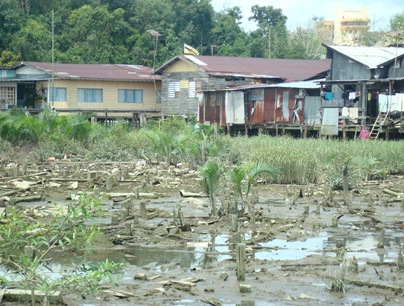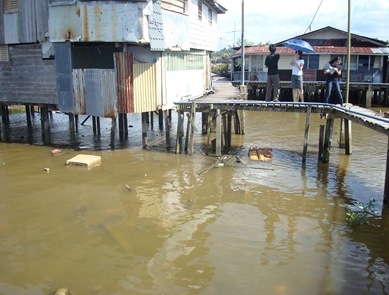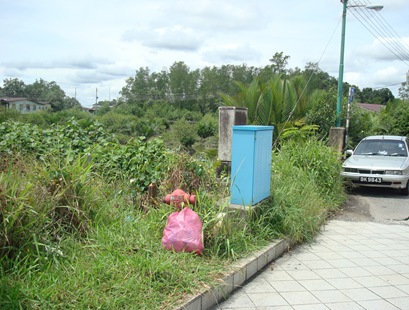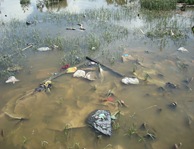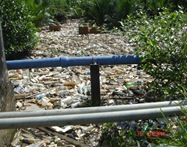Pollution such as rubbish and waste materials of the Brunei River, Brunei Darussalam, is still occurring and so far, actions done by the relevant authorities and the people especially the Kampong Ayer people seem to have few positive effects as could be seen on the Brunei River especially during the low tide at the area of Kampong Ayer. In this written report, first of all, in the second part, we would like to take three examples of case study of the three solutions from the three countries as our references. One of it is in Europe, which is Venice, Italy. Then, in Southeast Asia, which is Citarum, Indonesia and after that, in Asia, which is at Ganges, India. And from there onwards, we would like to proceed to the third part of our written report, which are our proposed solutions for the problems of the river pollution for the Brunei River. And after that, we would like to finish this written report in the fourth part of this written report with a conclusion of our proposed solutions for the pollution of the Brunei River.
1- Solution from Venice, Italy
We take Venice, Italy, as our first reference for the problems of the pollution of the Brunei River since Kampong Ayer is called by Antonia Pigafetta as ‘Venice of the East’, which means Kampong Ayer resembles Venice in Brunei, which is located in the eastern part of the world in the Southeast Asia region. We take the Forum for the Venice Lagoon’s example of their solutions in dealing with the river pollution at Venice which would be explained in the next four paragraphs.
The Forum for the Venice Lagoon plans to meet with representatives of the scientific institutions with specialized knowledge related to the problems of the Venice lagoon and learn from its successful citizen-based projects. They also plan to seek support for joint projects that deal with, among other things, sustainable development for the unique conditions characteristics of the lagoon, re-settlement and revival of the economy on the smaller abandoned islands, job creation for young residents and re-naturalization of the previously reclaimed areas.
The forum, on the other hand, was founded about eighteen years ago in 1991, The Forum for the Venice Lagoon has supported and participated in many environmental information and participation initiatives with financing from the local authorities, the Italian’s Ministry of the Environment and the European Union, and therefore, this forum has many supports and assistances from the relevant authorities.
The group, in addition, is also a member of the European Network of Urban Forums for the Sustainable Development and has the European Union support to start a network for the environmental education and job creation in the Mediterranean and the Black Sea countries, and therefore, making the forum to be well-recognized.
Four of the efforts done in order to solve the problems at the Venice River were harvesting macro-algae, constructing septic tanks in the city of Venice, and developing phyto-purification systems in the river estuaries. Then, cooperation with the private sectors such as reducing production, building river embankment, and so on and so forth. On the other hand, Brunei could apply the forum’s four efforts of dealing with the problems of the river pollution at Venice and adapt it according to Brunei River’s conditions.
2- Solution from Citarum, Indonesia
Sources: http://pubs.acs.org/cen/coverstory/7835/7835sci1.html![clip_image002[6] clip_image002[6]](http://lh6.ggpht.com/_zjwUw_tevXE/Se8isbRB9bI/AAAAAAAAACg/TDh5GHHTZfk/clip_image002%5B6%5D_thumb%5B4%5D.jpg?imgmax=800)

We take Citarum, Indonesia, as our second reference since it is one of the worst cases of river pollution in the world. The people who search for rubbish said that they could recover and trade the rubbish such as the plastic bottles, the broken chair legs, the rubber gloves and so on and so forth. And in addition, they even risk diseases for one or two pounds a week when they are lucky enough to get someone who are willing to buy or trade their selling or trading goods which were from the Citarum river. And therefore, the people who are collecting the rubbish, in someway or another, are doing at least an effort to reduce the vast amount of rubbish at the Citarum River. And therefore, we need to make effective and efficient actions in order to have a long-lasting cleanliness and the right maintenance of the Brunei River or it would end up something like the Citarum River in Indonesia.
![clip_image002[9] clip_image002[9]](http://lh5.ggpht.com/_zjwUw_tevXE/Se8i23wiEBI/AAAAAAAAACw/JNmHPJeL3Vc/clip_image002%5B9%5D_thumb%5B12%5D.jpg?imgmax=800)
Sources: http://pubs.acs.org/cen/coverstory/7835/7835sci1.html
3- Solution from Ganges, India
![clip_image002[12] clip_image002[12]](http://lh6.ggpht.com/_zjwUw_tevXE/Se8i6j70JqI/AAAAAAAAAC4/IY4vZXtyTEc/clip_image002%5B12%5D_thumb%5B2%5D.jpg?imgmax=800)
We take Ganges, India, as our third reference since, just like Citarum in Indonesia, it also has one of the worst cases of the river pollution in the world. The solution from India was by using a pipeline to clean the water. However, the problem with this solution is the fact that the pipeline used the electric-powered pumps to pump the water through to clean it. When the power goes out, the town regained all the polluted water back, and the polluted water was even more than there was before it was pumped. And therefore, Brunei could apply this solution and adapt it according to Brunei River’s conditions since one of the reasons is Brunei rarely has a case of the power or the electricity to go out and therefore, Brunei would be less likely to have this problem if they adapted the solution from India.
Our Proposed Solutions for the Pollution of the Brunei River, Brunei Darussalam
1- Four Prevention Strategies in Preventing the Problems of the Pollution of the Brunei River from Increasing and Getting Worse
The first of the fourth prevention strategies is to implement the enforcement of laws, regulations, policies and procedures such as the continuous progress and patrolling of the Brunei River by the relevant authorities, and so on and so forth. The second prevention strategy is the monitoring system, both in term of human and in term of technology. The third prevention strategy is to increase more and more awareness through education including the students in schools, the inhabitants living in Kampong Ayer, the villagers, the Penghulu-Penghulu, the Ketua Kampong-Ketua Kampong (village head) and Bruneians as a whole. And the last or the fourth prevention strategy is to improve more infrastructures and add more of it at Kampong Ayer such as more rubbish bins at the appropriate places such as along the pathways and jetties at Kampong Ayer.
2- Seven Curing Strategies for the Problems of the Pollution of the Brunei River
The first of the seventh curing strategies is to do a cleaning campaign such as the effort toward implementing a cleaning campaign done by Universiti Brunei Darussalam (UBD) last year on October 2008 in conjunction with the Convocation Festival 2008 or the Pesta Konvo 2008 in Malay. However, unfortunately, too few people volunteered to do the cleaning campaign and therefore, the cleaning campaign was cancelled. The second curing strategy is in the building of high-tech infrastructures and equipments which could be learned from the other countries and it could be adapted according to Brunei’s situation. The third curing strategy is the creation of new employment opportunities both in the informal sector and the formal sector. The fourth curing strategy is the application of the foreign solutions and also, to adapt it according to Brunei’s situation. The fifth curing strategy is to attract influential people to support the campaign, to help and support the cause for curing the problems of the pollution of the Brunei River. The sixth curing strategy is to implement the ongoing and the consistent cooperations between the government, the private sector, the people especially the people of Kampong Ayer. The last or the seventh curing strategy is to implement ‘pick a rubbish per day’ campaign. There are about 40,000 people living in Kampong Ayer, and when all those 40.000 people do pick one rubbish per day, the level of pollution of the Brunei River could be greatly reduced. This ‘pick a rubbish per day’ campaign is based from a cleaning campaign some years ago in Kelantan, Malaysia, by its Menteri Besar, Nik Aziz Nik Mat in order to make Kelantan a cleaner country.
3- Seven Most Important Points of What We Are Lacking of in Solving the Problems of the Pollution of the Brunei River
We noticed that there are many important aspects that we are lacking of in order to solve or reduce the level of the pollution of the Brunei River. However, we also noticed that out of all those important aspects, there are seven most important aspects that we are lacking of here in Brunei. The first of the seventh areas that we are lacking of is in the research and development (R&D) aspect. Secondly, in the area of finance, financial assistance from both the public sector and the private sector are still not enough. The third point is in the area of support and assistance, again, the support from both of these sectors are still not enough. The fourth point is in the area of cooperation between the private sector, the people especially the Kampong Ayer people, and the public sector. The fifth point is in the area of maintenance. The sixth point is in the area of enforcement of laws, regulations and procedures. And the last or the seventh point is in the mindset or attitude of the Bruneians itself. All of these seven points mentioned before need more support and more assistance from both sectors of the government and the non-government organizations (NGOs), and even from the people itself especially the people of Kampong Ayer.
Conclusion
In conclusion, Brunei could apply the various solutions for the problems of the river pollution which were taken by Italy, Indonesia and India in the past, and adapt it according to Brunei River’s condition. In our proposed solutions for the problems of the river pollution in the Brunei River, we proposed four prevention strategies that could be used in preventing the problems from getting worse. Then, after that, we proposed seven curing strategies and finally, we mentioned the seven most important points of what we are lacking of in solving the problems of the Brunei River’s pollution. In the end, we hope that the problems of the river pollution for the Brunei River would be dealt effectively and efficiently. We also hope that the cleanliness of the Brunei River would be long-lasting with proper maintenance of the relevant authorities and the people especially the people of Kampong Ayer.
 Bandar Seri Begawan From Sg. Brunei (Copyrighted)
Bandar Seri Begawan From Sg. Brunei (Copyrighted)  Istana Nurul Iman (copyrighted)
Istana Nurul Iman (copyrighted)  The ELDRF – Creating Awareness Through Photography (Copyrighted)
The ELDRF – Creating Awareness Through Photography (Copyrighted)
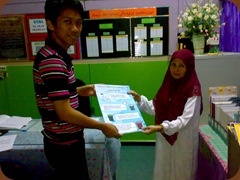
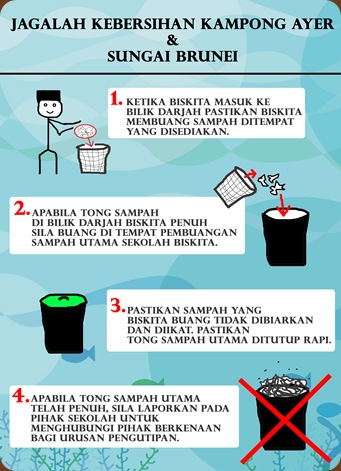


![clip_image002[6] clip_image002[6]](http://lh6.ggpht.com/_zjwUw_tevXE/Se8isbRB9bI/AAAAAAAAACg/TDh5GHHTZfk/clip_image002%5B6%5D_thumb%5B4%5D.jpg?imgmax=800)

![clip_image002[9] clip_image002[9]](http://lh5.ggpht.com/_zjwUw_tevXE/Se8i23wiEBI/AAAAAAAAACw/JNmHPJeL3Vc/clip_image002%5B9%5D_thumb%5B12%5D.jpg?imgmax=800)
![clip_image002[12] clip_image002[12]](http://lh6.ggpht.com/_zjwUw_tevXE/Se8i6j70JqI/AAAAAAAAAC4/IY4vZXtyTEc/clip_image002%5B12%5D_thumb%5B2%5D.jpg?imgmax=800)
